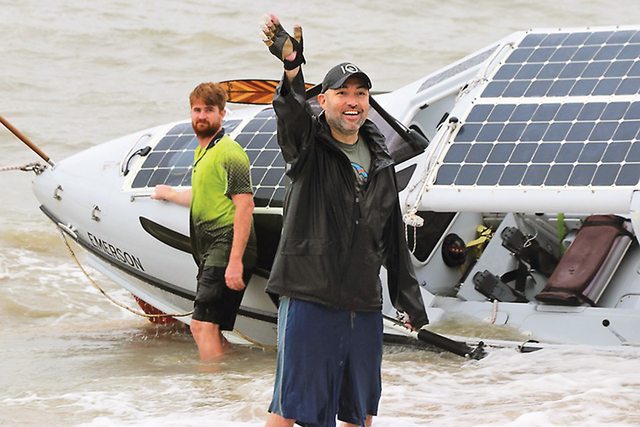In an extraordinary feat of endurance and determination, Jacob Hendrickson, a former A-10 fighter pilot, has etched his name into the annals of adventure history by completing the first-ever solo, unsupported, and continuous row across the Pacific Ocean from North America to Australia. Covering approximately 7,145 statute miles (over 10,000 miles factoring in ocean currents) in 336 days, from July 7, 2018, to June 6, 2019, Hendrickson’s 11-month journey stands as a testament to human resilience and the pursuit of audacious goals.
Starting from Neah Bay, Washington, Hendrickson embarked on his record-setting voyage in a custom-built, 28-foot carbon fiber rowboat designed by a naval architect in St. Augustine, Florida. The vessel, constructed at Schooner Creek Boat Works in Portland, Oregon, was engineered to be self-righting and equipped with solar panels, a water maker, and enough supplies to sustain him for up to 10 months. Hendrickson’s meticulous preparation included two years of planning, from consulting with nutritionists at Oregon State University to ensure a 6,000-calorie daily diet to training with sports medicine experts at Washington State University to prevent overuse injuries. He even participated in the boat’s construction to understand its systems intimately, ensuring he could handle repairs at sea.
The journey was fraught with challenges. Hendrickson faced relentless ocean currents, tropical cyclones, and equipment failures, including a critical sea anchor blowout near Australia. A particularly harrowing moment came during Tropical Cyclone Ann in the Coral Sea, when a massive wave swamped his cabin, broke oars, and nearly cost him vital supplies. Despite losing three weeks’ worth of food to water-damaged hatches, Hendrickson rationed his remaining provisions and persevered. Wildlife encounters, including sharks trailing his boat and a near-miss with two eight-foot sharks after falling overboard, added to the physical and psychological demands of isolation.
Hendrickson’s background as an A-10 pilot, with deployments in Afghanistan and assignments in Germany and Korea, instilled the discipline and focus needed for such an endeavor. Yet, it was his personal quest for meaning—sparked by a sense of not fitting in and a desire to push beyond the confines of a conventional career—that drove him to leave the Air Force after 12 years and pursue this unprecedented challenge. “Something was still missing,” Hendrickson said, reflecting on his decision to trade a military pension for the open ocean. “I wanted to learn a new skill set and challenge myself physically and mentally.”
Navigating by GPS, celestial navigation, and satellite-downloaded weather charts, Hendrickson plotted his course to leverage seasonal winds, crossing the equator with guidance from Seattle’s Starpath School of Navigation to avoid countercurrents. His mental fortitude, honed through meditation and an acceptance of his new reality, allowed him to thrive in solitude, unlike other ocean rowers who struggled with isolation. “You have to accept it,” he said. “This is your life now. The wildlife are your neighbors.”
The journey culminated at Trinity Beach, Australia, where Hendrickson made landfall after anchoring on Flynn Reef in the Great Barrier Reef to wait out unfavorable winds. Greeted by family, the Australian Volunteer Coast Guard, and local media, he stepped onto shore, his legs unsteady after 11 months at sea. “It was disorienting,” he recalled, “but seeing the coastline, the trees—it was amazing.”
Hendrickson’s achievement surpasses the 1982 Pacific crossing by Peter Bird, who required resupply and rescue, making his solo, unsupported, and continuous row a singular milestone. Recognized as a world record in the niche sport of ocean rowing, his journey has inspired adventurers and endurance athletes worldwide.
Post-voyage, Hendrickson faced new challenges, including losing his pilot’s medical clearance due to a rare eye condition, forcing him to pivot from a career in aviation. Now exploring opportunities in the business world, he remains undeterred, drawing on the same resilience that carried him across the Pacific. “It was a costly adventure,” he said, “but I’d do it again. The experiences, the connection to nature—it’s what keeps me going.”
Jacob Hendrickson’s story is a reminder that true adventure lies in embracing the unknown, confronting adversity, and redefining what’s possible. His legacy as a fighter pilot turned world-record ocean rower will inspire generations to chase their own horizons, no matter how daunting. For more details on his journey, visit his website, where logs and updates chronicle this historic voyage.


Leave a Reply